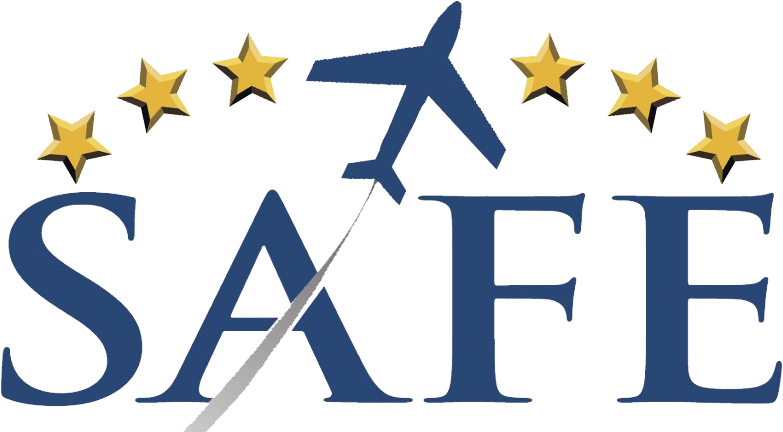by Parvez Dara, ATP, MCFII, MEI (and our SAFE Treasurer)
Pilot error is the single most important cause of fatalities in aviation. Especially when you allow the statisticians their free reign at numbers. The percentages that pile up suggest upwards of 80% of all fatal accidents are pilot related. One wonders then why these lamentable tragedies don’t ease up? If we as pilots know of all the various ways of crashing an airplane, why do we keep doing it? To get better at it? Hopefully not for that reason. There is something else here that escapes the eye. Let us dig deeper into this morass of prejudged eventualities.

Why does a VFR pilot fly into the clouds only to lose his way in the soft bitter blindness of gray?
To be a little considerate of this poor bloke, let us look at how that is possible. Given the mind’s judicious use of fuzzy logic to plant an image where one does not exist, is one way. As the visibility lowers in haze, the mind continues to fool the decision maker into thinking that the buildings he was seeing are still there albeit a little hazy. He soldiers on, only to suddenly realize that the there is not there and panic sets in. I remember flying in a flight of two on a summers day with a VFR-only pilot and his companion. As the visibility lowered and my eyes diverted to the instruments, I realized that the other pilot did not have the same capability. I asked the Air Traffic Control to tell my “company aircraft” to reverse course back to our departure airfield. Upon landing, we checked the weather and further west of our 180-degree site had gone IFR.
Preflight is another big bugaboo. Multi-hundred-hour pilots will treat flight as if it is riding a bicycle. They will assuredly “kick the tires and light the fires” and off they go, as if they are exempt from the rigors of human fallacies. Most times it is okay, but then there is suddenly that one in thousand NTSB report that makes your heart sink. How could he? Why do we ignore a good and thorough preflight? Mostly because, a) we expect it to be okay, b) it is a time drain and delays our ultimate thrill to be up in the air, c) heuristics of laziness d) all others you can conjure up. But preflight is when you find all sorts of things that can go wrong: a) contaminated fuel, b) a broken spring on the landing gear, c) cowl plugs plugged in deep, d) a bird-nest e) open baggage compartment door, f) a fouled plug or a broken ceramic spark plug, g) low oil, h) a flat spot on the tire ready to go, i) a blocked pitot tube and myriad other potential maladies that can lead to those lamentable tragedies.

The pilot is the Commander of his aircraft. No one has the greater authority other than when he or she delegates to a flight instructor or another pilot in the right seat. One of the mainstays of safety is never ever to abrogate one’s authority to fly the aircraft. You are the boss. You make the decisions (you may elect to recognize another’s opinion especially if it is a contrary opinion for inclusion sake) but the ultimate responsibility still weighs heavily on the pilot. You decide if the rudder or your authority is breached in a crosswind landing. You decide on an alternate airport as the weather deteriorates. You decide on the weight and balance. You decide what is the safest and most favorable approach to a safe arrival at your destination. You are it. You are the Big Cheese! Take that responsibility seriously but with a dose of humility.
Above it all, as a pilot you must learn to respect two very important things: 1. The Aerodynamic limits of the airfoil and 2. Your own Experiential Limits. Never let the latter exceed the former and never let yourself be seduced into trying to find the edge of the aerodynamic envelope without first experiencing it with a more experienced and knowledgeable instructor. Loss of control take too many pilots.

In the end, then, all lamentable tragedies are a learning experience. They titillate the journalists into writing hyperboles but at the very core, these disasters are learning experiences. Unfortunately, others have shed blood and bent aluminum not to be rendered as a “stupid mistake” or an act of “incoherent idiocy” or be subject to the glowering mean judgmental eye, but they are to be used as a mechanism to learn from and avoid similar errors. Safety is like climbing on the shoulders of others and seeing what they have seen and learning to avoid where they might have erred.
Please “follow” our SAFE blog to receive notification of new articles. Write us a comment if you see a problem or want to contribute an article. We are always seeking more input on aviation improvements and flight safety. There are many highly qualified aviation educators out there! If you are not yet a SAFE member, please Join SAFE and support our mission of generating aviation excellence in teaching and flying. Our amazing member benefits alone make this commitment worthwhile and fun. Lastly, use our FREE SAFE Toolkit App to put pilot endorsements and experience requirements right on your smart phone and facilitate CFI+DPE teamwork. Working together we make safer pilots!
